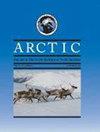基于下一代测序技术对北极熊饮食的新见解
IF 0.8
4区 地球科学
Q4 ENVIRONMENTAL SCIENCES
引用次数: 1
摘要
量化北极熊广泛饮食选择的实用工具尚未得到很好的发展,从而阻碍了在气候变化中对这一物种的监测。在这里,我们描述了我们在无创北极熊饮食测定方面的步骤,优化了从圈养和野生北极熊粪便中提取的136碱基对(bp)线粒体细胞色素b (cytb)片段的454焦磷酸测序。在加拿大安大略省Cochrane的加拿大北极熊栖息地,我们首先利用一只圈养北极熊的5个粪便样本来确定我们方法的有效性、可靠性和准确性;来自加拿大安大略省多伦多市大都会多伦多动物园的三只北极熊的19个样本;以及从加拿大马尼托巴省丘吉尔的一个收容设施中提取的7只野生(未喂食)北极熊的7个样本。我们报告了从北极熊粪便中扩增136 bp cytb扩增子的91%的总体成功率。我们的DNA分析准确地恢复了圈养熊以已知饮食喂养的脊椎动物饮食特征。然后,我们对加拿大努纳维特M 'Clintock海峡北极熊管理单位的海冰上自由放养的北极熊的多年脊椎动物猎物饮食选择进行了分析(n = 117只熊,来自未知数量的熊)。这些数据表明,不出意外地,环斑海豹(Pusa hispida)在饮食中占主导地位,同时也包括胡须海豹(Erignathus barbatus)、斑海豹(Phoca vitulina)、麝鼠(Ovibos moschatus ssp.)、北极狐(Vulpes lagopus)、狼(Canis lupus)、银鸥(Larus argentatus)和柳雷鸟(lagopus lagopus)的证据。我们发现低水平的污染(< 3%的序列存在时),并建议具体的工艺改进,以减少污染范围广泛的研究。总之,这些发现表明,在这个气候变化时期,下一代基于测序的饮食评估在监测自由放养的北极熊方面显示出巨大的希望。本文章由计算机程序翻译,如有差异,请以英文原文为准。
New Insights on Polar Bear (Ursus maritimus) Diet from Faeces based on Next-Generation Sequencing Technologies
Practical tools to quantify range-wide dietary choices of the polar bear have not been well developed, thus impeding the monitoring of this species in a changing climate. Here we describe our steps toward non-invasive polar bear diet determination with the optimization of 454 pyrosequencing of a 136 base pair (bp) mitochondrial cytochrome b (cytb) fragment amplified from the extracts of captive and wild polar bear faeces. We first determine the efficacy, reliability, and accuracy of our method using five faecal samples from a captive polar bear fed a known diet at the Canadian Polar Bear Habitat in Cochrane, Ontario, Canada; 19 samples from three polar bears at the Metro Toronto Zoo, Toronto, Ontario, Canada; and seven samples from seven wild (unfed) polar bears from a holding facility in Churchill, Manitoba, Canada. We report 91% overall success in amplifying a 136 bp cytb amplicon from the faeces of polar bears. Our DNA analyses accurately recovered the vertebrate diet profiles of captive bears fed known diets. We then characterized multiyear vertebrate prey diet choices from free-ranging polar bears from the sea ice of the M’Clintock Channel polar bear management unit, Nunavut, Canada (n = 117 from an unknown number of bears). These data point to a diet unsurprisingly dominated by ringed seal (Pusa hispida) while including evidence of bearded seal (Erignathus barbatus), harbour seal (Phoca vitulina), muskox (Ovibos moschatus ssp.), Arctic fox (Vulpes lagopus), wolf (Canis lupus), Herring Gull (Larus argentatus), and Willow Ptarmigan (Lagopus lagopus). We found low levels of contamination (< 3% of sequences when present) and suggest specific process improvements to reduce contamination in range-wide studies. Together, these findings indicate that next-generation sequencing-based diet assessments show great promise in monitoring free-ranging polar bears in this time of climate change.
求助全文
通过发布文献求助,成功后即可免费获取论文全文。
去求助
来源期刊

Arctic
地学-环境科学
CiteScore
2.30
自引率
0.00%
发文量
51
审稿时长
6-12 weeks
期刊介绍:
Arctic is a peer-reviewed, primary research journal that publishes the results of scientific research
from all areas of Arctic scholarship. Original scholarly papers in the physical, social, and biological
sciences, humanities, engineering, and technology are included, as are book reviews,
commentaries, letters to the editor, and profiles of significant people, places, or events of northern
interest
 求助内容:
求助内容: 应助结果提醒方式:
应助结果提醒方式:


